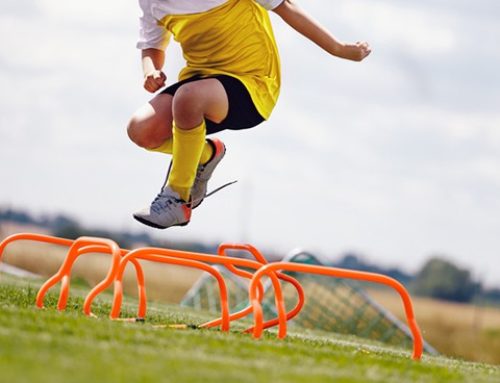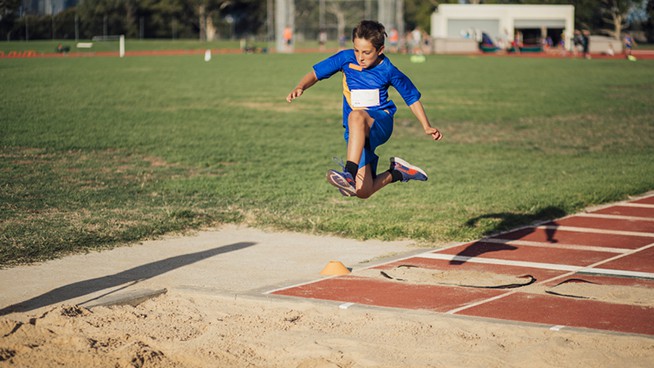How Flotation Therapy Improves Recovery
What if I told you there was a recovery process, which you probably haven’t heard about, that elite athletes are using to push their performance to a new level? It’s called floating, or more properly, floatation therapy, and it has drawn the attention of top level athletes in all professional sports.
RELATED: Boost Your Recovery With a Contrast Shower
Think of floating as a combination of an Epsom salt bath and a meditation session, except the Epsom salt bath has so much salt in it that you float on the surface. Additionally your senses are deprived because you float in darkness, the water is approximately the same temperature as your skin, and the tank is soundproof. With no distractions, you get all the benefits of the Epsom salt bath combined with the power of meditation. The benefits have been proven through science and through practice by thousands of people.
After hearing about floating for a few years, I knew I had to check it out. That’s when I found Motor City Float, a float center located in the metro Detroit area, and I was not disappointed. Interestingly, the person who was scheduled directly after my float session was Tobias Harris of the Detroit Pistons.
Since this initial experience, I have added floating to my own personal recovery process, and I’ve been very pleased with the results, both physically and mentally. I am not the type of person who can just sit down and meditate on command. I have tried, but I can’t do it very easily. But depriving the senses makes it much easier to get into a meditative state, and from what my friends who meditate regularly have told me, the tank takes it up a notch.
The Science
So it’s one thing for me to tell you floating is worth it and that many elite athletes use it, but it’s another to have the process backed by science. The great thing is that research confirms these claims. Epsom salt baths and meditation have both been studied, and much research can be found through a simple search on Google Scholar or PubMed.
What about floating specifically?
For a 2005 study that investigated floating’s effects on stress-related muscle pain/tension and mental burnout, participants floated at intervals for six weeks. Result: the participants showed lowered blood pressure, reduced pain, anxiety, depression, stress and negative affectivity, as well as increased optimism, energy and positive affectivity.
RELATED: How to Use the Pool to Recover Faster from Workouts
Another study in 2016 specifically examined floating with elite athletes and combining floating with napping during the session. Sixty athletes floated within three hours after training or practice. Some were instructed to nap while floating and some were instructed not to nap. The results showed that after floating, the answers to 15 of 16 mood questions asked indicated improvements in perceived muscle soreness.
In 20014, a meta-analysis was performed to gather as much information as possible on floating, and the results showed that as a stress management tool, floating is a great option that also offers some physiological benefits.
The Process
You’ve scheduled your first floating session, so how is it going to go down?
Once you get to the facility, you will be taken to the tank and asked to shower before you get in. As soon as you are squeaky clean, jump in the tank, shut the door and lie down. Be careful: once you lie down, do not wipe your face or touch your eyes. It is salt, after all. Once you are floating, try to remain as still as possible. Close your eyes, focus on your breathing and try to relax.
A great breathing technique that can help is called box breathing. Take a deep breath in that lasts three to four seconds, hold that breath for three to four seconds, exhale for three to four seconds and hold after exhaling for three to four seconds—then repeat. Repeat this box breathing technique until your are completely relaxed and let your mind empty. You may even fall asleep, which is completely fine because you will still be getting the physiological benefits. Once your time is up, you will be gently awakened by music or a knock. Exit, shower again and you will be on your way.
Give it shot; you won’t be disappointed! As always follow my Instagram or YouTube channel for daily content. A special thank you goes out to Sean at Motor City Float for helping me out!
References
1. Bood, S. A., Sundequist, U., Kjellgren, A., Nordstrom, G., & Norlander, T. (2005). “Effects of Flotation-Restricted Environmental Stimulation Technique on Stress-Related Muscle Pain: What Makes the Difference in Therapy – Attention-Placebo or the Relaxation Response?” Pain Research and Management,10(4), 201-209. doi:10.1155/2005/547467
2. Dierendonck, D. V., & Nijenhuis, J. T. (2005). Flotation restricted environmental stimulation therapy (REST) as a stress-management tool: A meta-analysis. Psychology & Health,20(3), 405-412. doi:10.1080/08870440412331337093
3. Driller, M. W., & Argus, C. K. (2016). Flotation restricted environmental stimulation therapy and napping on mood state and muscle soreness in elite athletes: A novel recovery strategy? Performance Enhancement & Health,5(2), 60-65. doi:10.1016/j.peh.2016.08.002
RECOMMENDED FOR YOU
MOST POPULAR
How Flotation Therapy Improves Recovery
What if I told you there was a recovery process, which you probably haven’t heard about, that elite athletes are using to push their performance to a new level? It’s called floating, or more properly, floatation therapy, and it has drawn the attention of top level athletes in all professional sports.
RELATED: Boost Your Recovery With a Contrast Shower
Think of floating as a combination of an Epsom salt bath and a meditation session, except the Epsom salt bath has so much salt in it that you float on the surface. Additionally your senses are deprived because you float in darkness, the water is approximately the same temperature as your skin, and the tank is soundproof. With no distractions, you get all the benefits of the Epsom salt bath combined with the power of meditation. The benefits have been proven through science and through practice by thousands of people.
After hearing about floating for a few years, I knew I had to check it out. That’s when I found Motor City Float, a float center located in the metro Detroit area, and I was not disappointed. Interestingly, the person who was scheduled directly after my float session was Tobias Harris of the Detroit Pistons.
Since this initial experience, I have added floating to my own personal recovery process, and I’ve been very pleased with the results, both physically and mentally. I am not the type of person who can just sit down and meditate on command. I have tried, but I can’t do it very easily. But depriving the senses makes it much easier to get into a meditative state, and from what my friends who meditate regularly have told me, the tank takes it up a notch.
The Science
So it’s one thing for me to tell you floating is worth it and that many elite athletes use it, but it’s another to have the process backed by science. The great thing is that research confirms these claims. Epsom salt baths and meditation have both been studied, and much research can be found through a simple search on Google Scholar or PubMed.
What about floating specifically?
For a 2005 study that investigated floating’s effects on stress-related muscle pain/tension and mental burnout, participants floated at intervals for six weeks. Result: the participants showed lowered blood pressure, reduced pain, anxiety, depression, stress and negative affectivity, as well as increased optimism, energy and positive affectivity.
RELATED: How to Use the Pool to Recover Faster from Workouts
Another study in 2016 specifically examined floating with elite athletes and combining floating with napping during the session. Sixty athletes floated within three hours after training or practice. Some were instructed to nap while floating and some were instructed not to nap. The results showed that after floating, the answers to 15 of 16 mood questions asked indicated improvements in perceived muscle soreness.
In 20014, a meta-analysis was performed to gather as much information as possible on floating, and the results showed that as a stress management tool, floating is a great option that also offers some physiological benefits.
The Process
You’ve scheduled your first floating session, so how is it going to go down?
Once you get to the facility, you will be taken to the tank and asked to shower before you get in. As soon as you are squeaky clean, jump in the tank, shut the door and lie down. Be careful: once you lie down, do not wipe your face or touch your eyes. It is salt, after all. Once you are floating, try to remain as still as possible. Close your eyes, focus on your breathing and try to relax.
A great breathing technique that can help is called box breathing. Take a deep breath in that lasts three to four seconds, hold that breath for three to four seconds, exhale for three to four seconds and hold after exhaling for three to four seconds—then repeat. Repeat this box breathing technique until your are completely relaxed and let your mind empty. You may even fall asleep, which is completely fine because you will still be getting the physiological benefits. Once your time is up, you will be gently awakened by music or a knock. Exit, shower again and you will be on your way.
Give it shot; you won’t be disappointed! As always follow my Instagram or YouTube channel for daily content. A special thank you goes out to Sean at Motor City Float for helping me out!
References
1. Bood, S. A., Sundequist, U., Kjellgren, A., Nordstrom, G., & Norlander, T. (2005). “Effects of Flotation-Restricted Environmental Stimulation Technique on Stress-Related Muscle Pain: What Makes the Difference in Therapy – Attention-Placebo or the Relaxation Response?” Pain Research and Management,10(4), 201-209. doi:10.1155/2005/547467
2. Dierendonck, D. V., & Nijenhuis, J. T. (2005). Flotation restricted environmental stimulation therapy (REST) as a stress-management tool: A meta-analysis. Psychology & Health,20(3), 405-412. doi:10.1080/08870440412331337093
3. Driller, M. W., & Argus, C. K. (2016). Flotation restricted environmental stimulation therapy and napping on mood state and muscle soreness in elite athletes: A novel recovery strategy? Performance Enhancement & Health,5(2), 60-65. doi:10.1016/j.peh.2016.08.002
[cf]skyword_tracking_tag[/cf]












